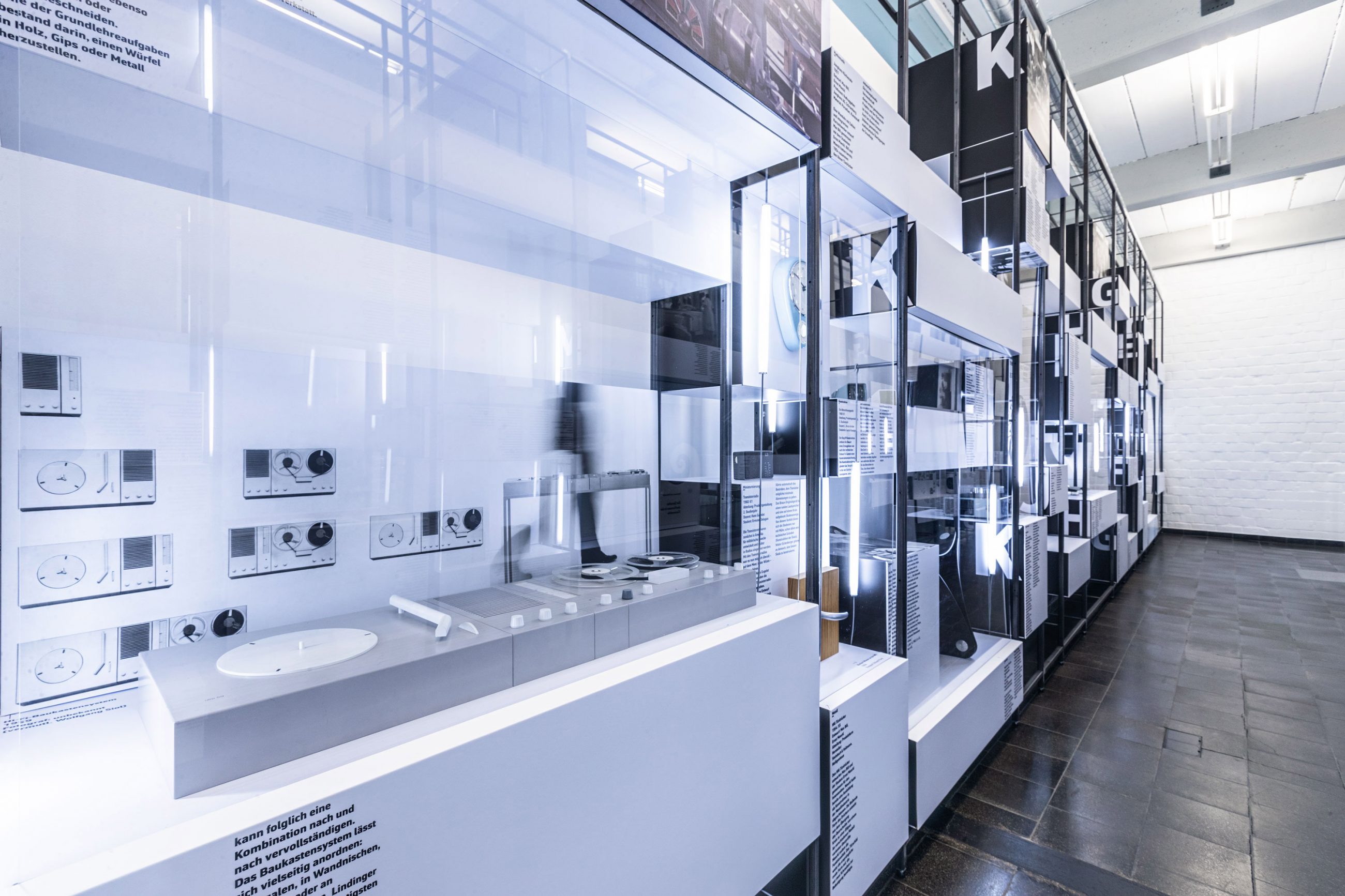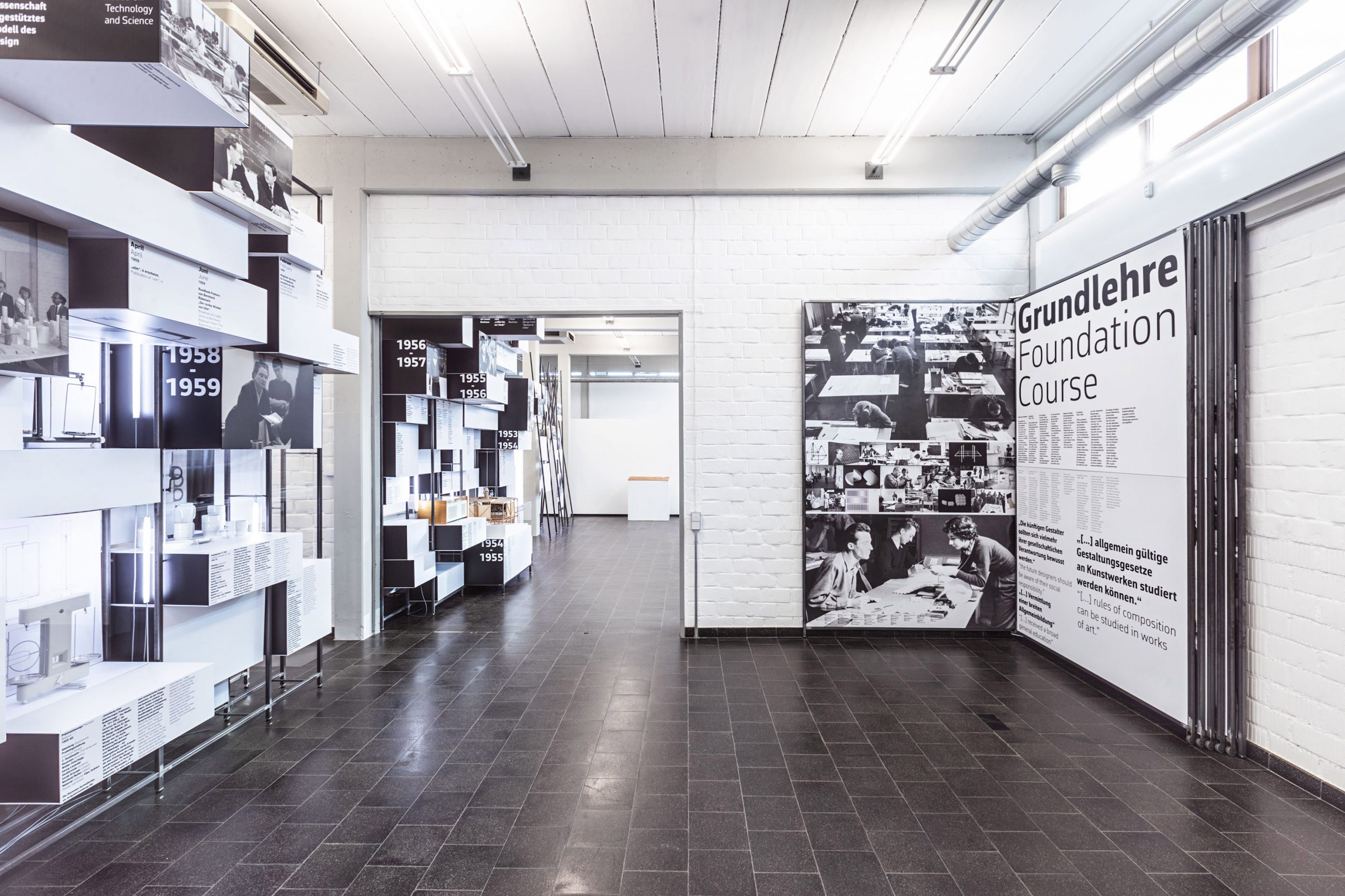Designing for democracy
«The HfG is not just a school where you are educated in a special subject; the HfG is more like a community whose members share the same intentions: bestowing structure and stability upon the world around us.»
(Tomás Maldonado, «Inaugural speech of the Rector of the HfG,» October 5, 1964)
The Ulm School of Design was an international center for teaching, development, and research in the field of designing industrial products. Designers were trained in five areas—Industrial Design, Visual Communication, Building, Information, and Film. The program lasted four years, and students graduated with a diploma. Classes were divided into departmental work, which concentrated on the practice of design, and relevant theoretical subjects. Teaching materials and methodologies were developed at the Ulm School for a whole new profession, that of the designer. The ongoing further development of the teaching methods of Ulm has led to an entire model that is still relevant in the teaching of design today.
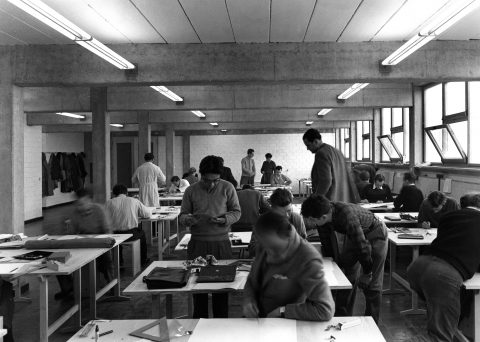
HfG basic course, Tomás Maldonado with students, 1955. Sign. HfG-Ar Dp 090.32. Photo: Ernst Hahn © HfG Archive / Museum Ulm. All rights reserved
«… let’s start, here in Ulm …»
(studio null, «let’s start,» typescript from June 16, 1948)
Inge Scholl and Otl Aicher were heavily involved in the development of the Ulm Adult Education Center (the vh) after the end of World War Two. They saw political education and environmental design as ways of strengthening democratic ideas, and encouraging the emergence of a new culture.
Inge Scholl founded the Geschwister-Scholl-Stiftung foundation in remembrance of her brother and sister Hans and Sophie Scholl, who were executed in 1943 by the Nazis as members of the «White Rose» resistance group. This foundation became the supporting institution behind the future HfG. From 1949, Inge Scholl, Otl Aicher, and Hans Werner Richter began planning a school of politics and arts in Ulm. Their contact to Max Bill redirected the focus of teaching toward design. John McCloy (the American High Commissioner responsible for Germany) the Norwegian European Aid Program, and the West German Finance Directorate all supported the project financially.

The destroyed city of Ulm, Otl Aicher with his poster designs, Inge Scholl and Hans Werner Richter in front of the Ulmer Münster, 1959. Sign: HfG-Ar Ros 752.012, Ros 750.014, Ros 756, 023. Photos: Ike und Hannes Rosenberg © HfG-Archiv Ulm. All rights reserved
«a new attitude to life»
(studio null «let’s start,» typescript from June 16, 1948)
The first classes started in 1953 in provisional rooms at the vh Ulm. Josef Albers, Walter Peterhans, Johannes Itten, and Helene Nonné-Schmidt taught the first 21 students. At the same time construction started on the Oberer Kuhberg complex following Max Bill’s plans. The official inauguration took place in 1955. Students and lecturers from all over the world lived and worked on the campus.
Max Bill’s room plan design reflects the teaching philosophy behind the Ulm School. Practical design work lay at the heart of the HfG curriculum, and this is reflected in the size of the workshops. Relevant theoretical content from a range of disciplines was taught as a complement to the practical element. The integration of life and work was a feature of the Ulm lifestyle. This allowed a «dense» study atmosphere to develop, which was a crucial precondition for the debate on design and social questions.

HfG Basic Course: Walter Peterhans with a student, 1953, Photo: Hans G. Conrad, © René Spitz. Irregular squares, Lecturer: Walter Peterhans, Student: Immo Krumrey, 1953, Sign. HfG-Ar Dp 019.001, © HfG-Archiv. Push-pull-connection, Lecturer: Josef Albers, Student: Ermano Delugan). Sign. HfG-Ar Sti M 197, Photo: Ernst Fesseler, © HfG-Archiv. All rights reserved
«From the coffee cup to the housing estate»
(Max Bill, «Speech at the topping-out ceremony for the first construction phase of the HfG,» July 5, 1954.)
Max Bill’s statement illustrates the wide scope of the initiators’ goal to train designers for a new mass culture. The program comprised a one-year Foundation Course followed by three years of specialization in one of the departments: Industrial Design, Visual Communication, Building, Information, and Film. In addition to their technical training, the students were taught about the future cultural and social responsibilities that they would bear.
The teaching program focused on practical design. Theoretical knowledge and methodology was taught as a complement to the design process from first draft to final result. In the Industrial Design Department objects and serials were planned and designed for industrial production. In the Building Department modular systems for industrialized construction were developed, and in the Visual Communication Department typography, graphics, and photography were used to illustrate complex issues or to produce complete corporate identities. The Information Department, which trained journalists, closed in 1964. Film, which was initially part of Visual Communication, became an independent department in 1961.

HfG designs: Stacking tableware TC 100, diploma thesis Hans Roericht, Sign. HfG-Ar MS 148. Motor grader, diploma thesis Klaus Krippendorff, Sign. HfG-Ar Dp 018.039. Carpet settlement in room cell construction, lecturer: Herbert Ohl, students: Willi Ramstein and Bernd Meurer. Sign. HfG-Ar M 25. Photos: Ernst Fesseler, © HfG-Archiv Ulm. All rights reserved
«The Ulm Model»
(Otl Aicher, «archithese» 15, 1975)
The years from 1953 through 1956 were heavily influenced by Max Bill, the first rector. He saw the HfG as a continuation of the Bauhaus, as was officially declared in a prospectus in 1952. However, only a few years later, in 1956, the school saw its first controversial debates over teaching methods and the curriculum. The younger lecturers demanded an independent teaching model rooted in science and theory, which would conflict with the concept propagated by the «followers of Bauhaus.» The designer should be an equal partner in the decision-making process of industrial design rather than a superior artist. Tomás Maldonado emphasized this point during his programmatic speech at Expo 58 in Brussels. Unhappy with the Ulm Model and the Board of Governors, a form of collective leadership, Max Bill first resigned as rector and finally left the HfG altogether in 1957.
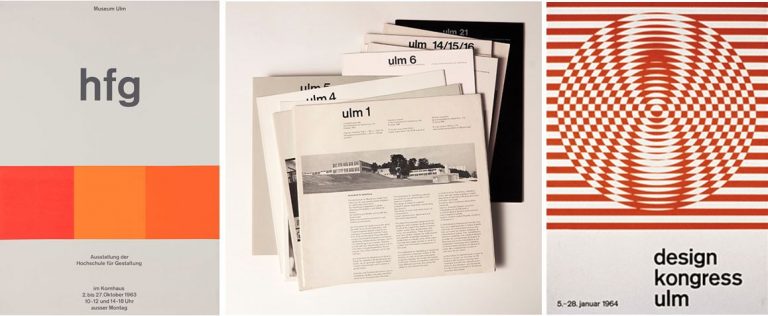
Poster designs and the magazine “ulm”: Poster for the traveling exhibition of the HfG, design: Herbert Lindinger, 1963. Sign. HfG-Ar Dp 043, photo: Oleg Kuchar, © HfG-Archiv. Magazine “ulm” 1-21, design: Anthony Fröshaug / HfG Ulm, 1959-1968, photo: Ernst Fesseler, © HfG-Archiv. Poster for a design congress, lecturer: Herbert Lindinger, student: Stefan May, 1964. Photo: HfG-Archiv, © HfG-Archiv. All rights reserved
«Scholarship and Design»
(Tomás Maldonado and Gui Bonsiepe, «Wissenschaft und Gestaltung,» ulm 10/11, May 1964)
Max Bill’s departure from the school heralded in a new phase: «development groups» were set up specifically to create links with industry. They worked like independent design agencies within the HfG. Many of the resulting designs went into production immediately; among the most successful were audio equipment for the Braun company, the corporate identity for the West German airline Lufthansa, and trains for the Hamburg elevated railway. These industrial commissions brought a wealth of practical experience to the teaching and decisively influenced the school and its reputation.
In fall 1958 a large exhibition was held at the HfG. Five years after it opened, the HfG presented itself to the general public for the first time, showing both results from the classroom and work by lecturers. 1958 also saw the first issue of the HfG magazine ulm, which was published in German and English right up until the school closed.
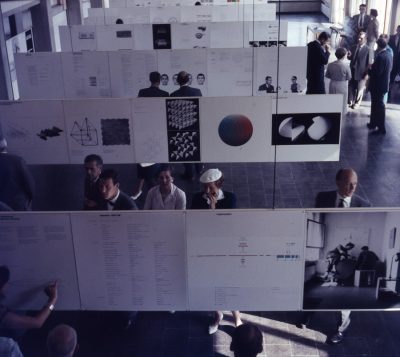
Exhibition in the HfG refectory on the occasion of the 5th anniversary of the school. Photo: Klaus Wille. Sign. Dp 134.001-5, © HfG-Archiv Ulm. All rights reserved
«design is like history, something that is created rather than inevitable.»
(Otl Aicher, «archithese 15», 1975)
The teaching became increasingly scholarly in the 1960s. Lecturers such as the mathematician Horst Rittel, the sociologist Hanno Kesting, and the industrial designer Bruce Archer favored a methodology based strictly on mathematical operations and analytical studies, for instance, on ergonomics or business analysis. This change in direction led to massive internal conflict. Otl Aicher, Hans Gugelot, Walter Zeischegg, and Tomás Maldonado resisted this development and claimed in contrast that design had to be more than an «analytical method.»
The consequence of this discussion was a large touring exhibition, which was initially shown in Ulm and Stuttgart in 1963, later in the Neue Sammlung in Munich and the Stedelijk Museum in Amsterdam. The show presented HfG work that had been created in classes. Further consequences of the fundamental debate were changes to the constitution and the reintroduction of a single rector to replace the board of governors.
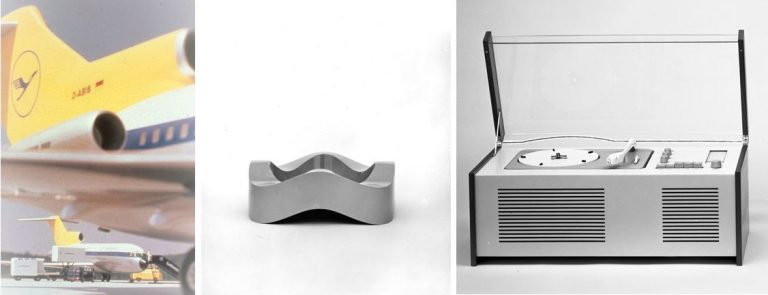
Designs by HfG lecturers: Appearance for Deutsche Lufthansa, Design: Otl Aicher, 1962. Sign. HfG-Ar Sti D 2.1566, Photo © HfG-Archiv. Stacking ashtray for the company Helit, Design: Walter Zeischegg, 1967, Sign. HfG-Ar Sti F 60/0087, Photo: Wolfgang Siol, © HfG-Archiv. All rights reserved
«It was not the end of the HfG that was heroic, but the hopes at the beginning. The HfG should not be measured by what it achieved, but by what it was no longer able to achieve.»
(Gui Bonsiepe, «ulm 21», 1968)
On the one hand internal conflicts always furthered the «HfG experiment» and led to new impetus for the institution; however they also involved serious criticism. Consequently, the regional parliament of Baden-Württemberg repeatedly debated whether the school deserved further subsidies. The Geschwister-Scholl-Stiftung was also severely in debt; as a result lecturers were made redundant and the number of classes was reduced. The regional parliament voted in November 1968 to withdraw all funding; consequently the school was shut down amid protests at the end of the year.
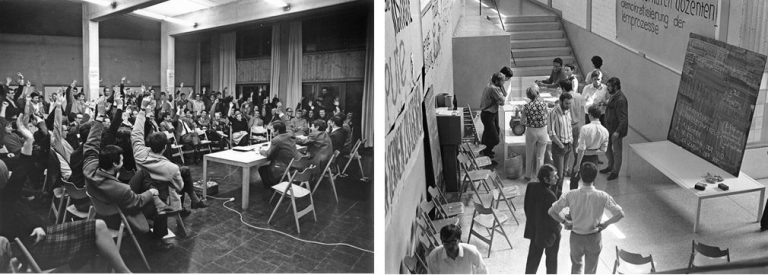
Vote against affiliation with the School of Engineering Ulm, 1968, Sign. HfG Dig 0021, Photo and © Lucien Bringolf. Student assembly HfG 1968, Sign. HfG Dig 0019.2, Photo and © Bernhard Bürdek. All rights reserved

